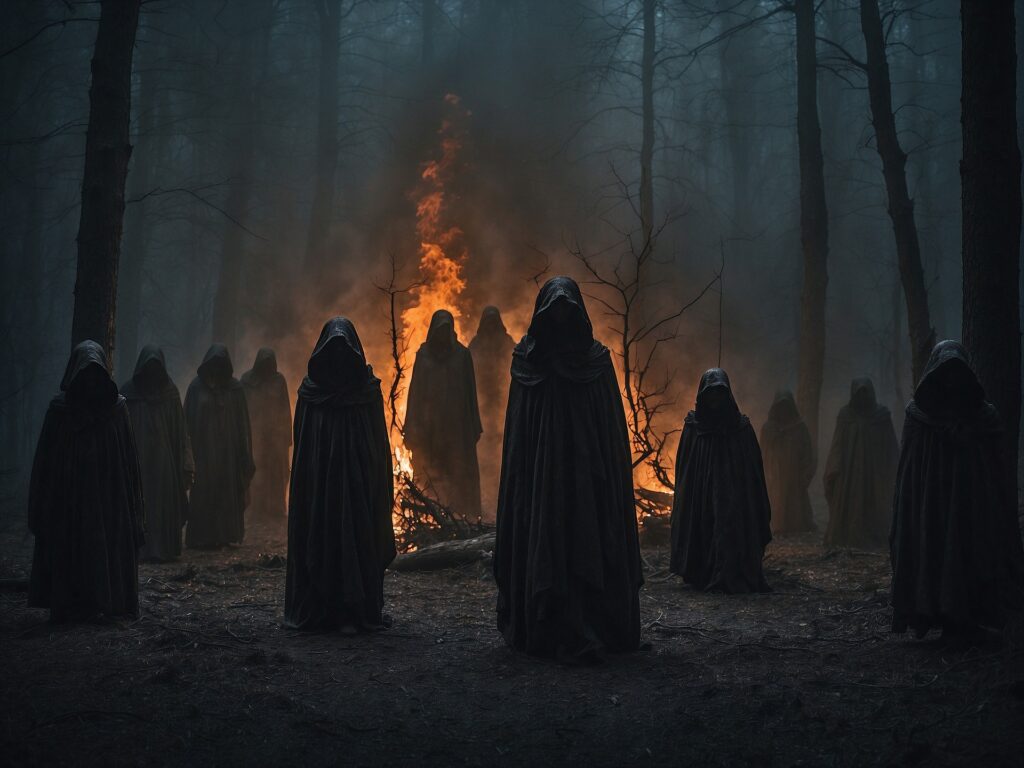Introduction to Witchcraft
For centuries, the word “witchcraft” has conjured up a mix of fear, misunderstanding, and fascination. But what is witchcraft? Beyond the broomsticks, black cats, and pop culture portrayals lies a deeply nuanced practice with roots stretching back to the dawn of civilization. Witchcraft, at its core, is a practice that involves the manipulation of natural forces to bring about change. It's a spiritual, cultural, and sometimes religious tradition that has evolved significantly over millennia.
My journey into understanding witchcraft began with curiosity. Like many, I grew up with a Hollywood version of witchcraft, complete with witches brewing potions and casting spells. However, as I delved deeper, I realised that witchcraft is as diverse as the cultures it comes from. It encompasses a range of beliefs and practices, from the healing arts of herbalism to the intricate rituals of ceremonial magic.
This exploration is not just an academic exercise; it's a personal quest. By sharing this journey, I hope to shed light on the true essence of witchcraft and dispel common myths. Let me also reveal why it's more relevant today than ever before. Join me as we explore the rich tapestry of witchcraft, its history, varieties, and its role in the modern world.
Image by Pete Linforth
The History of Witchcraft
The history of witchcraft is as old as humanity itself. From the shamanic traditions of prehistoric societies to the witch hunts of the early modern period, witchcraft has been revered, feared, and misunderstood in equal measure. The origins of witchcraft can be traced back to the Palaeolithic period. Cave paintings suggest a belief in magic and the supernatural. As societies evolved, so did the practices associated with witchcraft, blending with local customs and beliefs to form a rich mosaic of spiritual practices.
In ancient civilisations such as Egypt, Greece, and Rome, witchcraft was integral to daily life. Healers, seers, and wise women used herbs, spells, and incantations to cure illnesses. They foretold the future and invoked the gods' favour. However, the rise of Christianity marked a turning point. Witchcraft was increasingly associated with heresy and devil worship. The infamous witch hunts of the 15th and 17th centuries led to the persecution and execution of thousands, predominantly women, accused of witchcraft. The Salem Witch trials are a gruesome and distressing part of history for all who would call themselves Salems witches.
Yet, despite centuries of persecution, witchcraft has endured and transformed. The 20th century saw a resurgence of interest in witchcraft with the emergence of neo-pagan movements such as Wicca. This revival has helped reframe witchcraft as a spiritual practice, emphasising harmony with nature, personal empowerment, and reclaiming ancient wisdom.
Different Types of Witchcraft
 Witchcraft is an umbrella term that encompasses a wide range of practices and beliefs. From the wise women of Europe to the shamans of indigenous cultures, witchcraft takes many forms. One common thread, however, is the belief in the power of nature and the unseen forces that shape our world. Let's explore some of the many types of witchcraft that exist.
Witchcraft is an umbrella term that encompasses a wide range of practices and beliefs. From the wise women of Europe to the shamans of indigenous cultures, witchcraft takes many forms. One common thread, however, is the belief in the power of nature and the unseen forces that shape our world. Let's explore some of the many types of witchcraft that exist.
Wicca, perhaps the most well-known form of modern witchcraft, is a neopagan religion that celebrates the cycles of nature and the dual deities of God and Goddess. Wiccans observe seasonal festivals known as Sabbats and practice magic to bring about positive change.
On the other hand, traditional witchcraft refers to various practices rooted in the folk magic and lore of specific cultures. This can include the cunning folk of England, the benandanti of Italy, or the völva of Norse tradition. These practitioners often focus on healing, protection, and divination, using local herbs, stones, and symbols.
Another form is ceremonial magic, characterised by its structured rituals and elaborate symbols and invocations. This practice draws heavily on mediaeval grimoires and the works of occultists like Aleister Crowley. Ceremonial magicians seek to understand and harness the forces of the universe through precise ritual work.
Each of these paths offers a unique perspective on witchcraft. Thereby highlighting the diversity and adaptability of these ancient practices in the modern world.
Common Misconceptions About Witchcraft
Despite the rich history and diversity of witchcraft, many misconceptions persist. One of the most pervasive is the idea that witchcraft is inherently evil or linked to Satanism. This misconception stems largely from historical propaganda. This is not reflective of the beliefs and practices of most witches. In its many forms, Witchcraft is a practice centred around balance, healing, and the reverence of nature. Not the worship of malevolent forces.
Another common myth is that witchcraft is purely fantastical, involving casting impossible spells like those seen in movies and TV shows. While witchcraft does involve spells and rituals, these are not the sensationalised magic of fiction. They are, however, focused intentions and actions designed to manifest change. The effects of these practices are often subtle, aligning more with the principles of psychology and metaphysics than with overt displays of supernatural power.
Lastly, there's the stereotype of the “wicked witch” or the notion that witches are predominantly women. While many practitioners are women, and the divine feminine plays a significant role in many witchcraft traditions, the craft is open to all genders. The image of the witch as a solitary, evil figure is a far cry from the reality of witchcraft as a communal, often healing practice.
The Significance of Symbols in Witchcraft
Symbols are the language of witchcraft. They are how practitioners connect with the forces of nature, the elements, and the spiritual realm. Each symbol carries specific energies and meanings, whether drawn in the air with a wand, inscribed on a candle, or worn as jewellery. Understanding these symbols is key to understanding witchcraft itself.
The pentacle, a five-pointed star within a circle, is one of the most recognizable symbols of witchcraft. It represents the elements of Earth, Air, Fire, Water, and Spirit and is used for protection and manifestation. It reminds us of the interconnectedness of all things. The pentacle is often confused with the pentagram and misassociated with satanic rituals, yet in witchcraft, it is a positive, protective symbol.
Another significant symbol is the triple moon, representing the Goddess in her Maiden, Mother, and Crone aspects. This symbolises the cycle of life, the phases of the moon, and the feminine divine. It serves as a reminder of the power of transformation and the soul's eternal nature.
divine. It serves as a reminder of the power of transformation and the soul's eternal nature.
These are just a few examples of the rich symbolic language of witchcraft. Each tradition and path has its symbols, each imbued with meaning and purpose. By learning these symbols, we can begin to understand the deeper truths of witchcraft and the universal forces it seeks to tap into.
Only Just the Beginning!
Given the complexity and depth of this topic, exploring the entire landscape of witchcraft in one sitting is quite a challenge. Each section of this exploration opens doors to new understandings, dispelling old myths and illuminating the multifaceted nature of witchcraft. From its historical roots to its modern expressions, witchcraft is a testament to the endurance of human curiosity and the profound connection we seek with the world around us.
While I can't cover everything in this piece, I encourage those interested in learning more about witchcraft to continue exploring. There are countless resources available for those willing to look beyond the surface. Explore the rich tapestry of practices, beliefs, and communities that make up the world of witchcraft. Whether through reading, workshops, or engaging with practising communities, the journey into understanding witchcraft is as rewarding as it is enlightening.
The Article What is Witchcraft – And Why It’s More Than Meets the Eye First Appeared ON
: https://ad4sc.com






Comments are closed